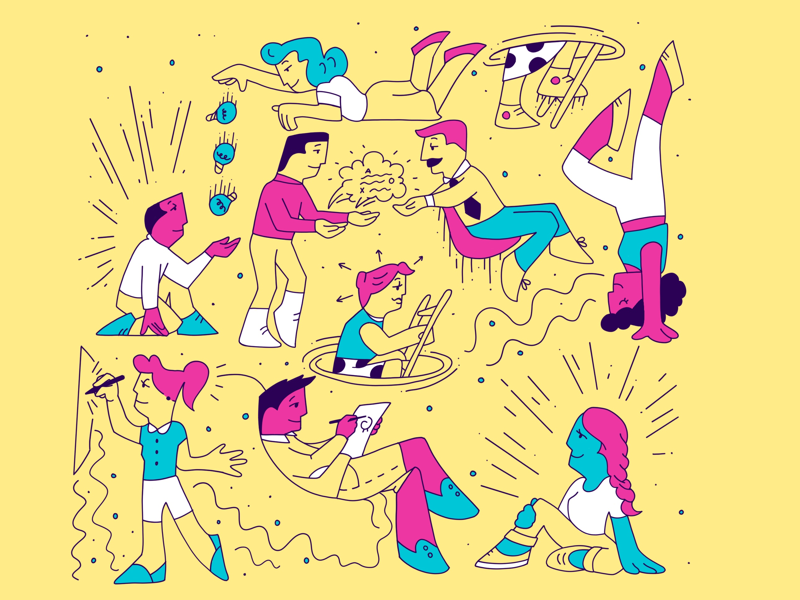In yesterday’s blog post, we discussed the value of hiring illustrators for your business as opposed to using free, or less costly resources like stock imagery or open-sourced design. Today, we’re digging into a different angle and exploring the value that open design has for the design community and industry at large.
In case you aren’t familiar with the concept of open design, it refers to the access and use of publicly shared design, without the need to possess any intellectual property rights of these assets.
Open design tends to be a controversial subject across the design community, and with good reason. If not used thoughtfully and with its intended purpose, open design can feel like an intimidating adversary when it comes to advancing the industry and valuing designers’ work. In this post, we’ll aim to understand the benefits and opportunities of an open design mentality and how it can be used for the greater good of the industry, now and in the future.
Row 1: Tania Yakunova, HALO LAB, Justine Foster.
It fosters a culture of learning and growth
One of the main tenets of open design is to give back to the design community and propel it forward. As opposed to the idea of offering up free work or making it easy for someone else to capitalize on work that isn’t fully their own, open design aims to welcome new practitioners into the field and help them discover the value of design through transparency and education. For example, as a designer just starting out, you can improve your own process and deliverables by inspecting and tinkering with other’s source files. When we learn and grow together, our craft becomes better as a whole.
It builds community
It’s no secret that cultivating strong communities makes us more effective in reaching goals and overcoming challenges. When designers are willing to share their process, techniques, and talents, we create more engagement within our community and connect with one another on an even deeper level. The idea is that there is room for everyone in this industry to succeed, and by exposing what’s under the hood, we’re fostering the belief that we’re all on the same team, and together we’re building up the designers of today and making room for the designers of tomorrow.
It makes design more accessible
Not all aspiring designers have the resources to help them level up in their craft—whether that means owning the right software or enrolling in online courses. The idea of open design is to make design knowledge accessible to all, so even if you can’t actively “participate” you can still learn and better understand how design works. You can take away skills and ideas to use later on in a project or get a deeper understanding of the complexity and significance behind design.
Take Lyft’s Colorbox web tool as an example. The team at Lyft committed copious research and testing into designing better, more accessible color systems for their own interfaces. According to their article Re-approaching Color built a tool around their findings for the purpose of sharing it with other design teams and leveling the playing field.
“At Lyft, we believe in an inclusive future where anyone can pick up a product and be successful. We feel that in order for an inclusive future to happen we all need to be thinking about and building accessible products. So today, we’ve shared our learnings about working with color, and we are open-sourcing our color algorithm.”
It encourages innovation
It’s hard to imagine a world where design continues to evolve and innovate without new ideas being explored and shared. The case for open design suggests that these new ideas stem largely from collaborating and learning from one another. When we release our knowledge and process through things like source files, videos, and tools, we’re not only showing others how something was designed, we’re also helping our field reach new heights by inviting folks to build on top of what we’ve created, effectively generating new, alternative possibilities and solutions to problems big and small.
Conclusion
What we’ve covered above only outlines the benefits of open design. This isn’t to say that it’s the only way forward or to discredit that, in the wrong hands or with ill intentions, it can be used wrongfully. Clients, designers, and corporations still need to understand the value of original, commissioned work and not rely on free resources as a means to every end.
Find more Community stories on our blog Courtside. Have a suggestion? Contact stories@dribbble.com.











